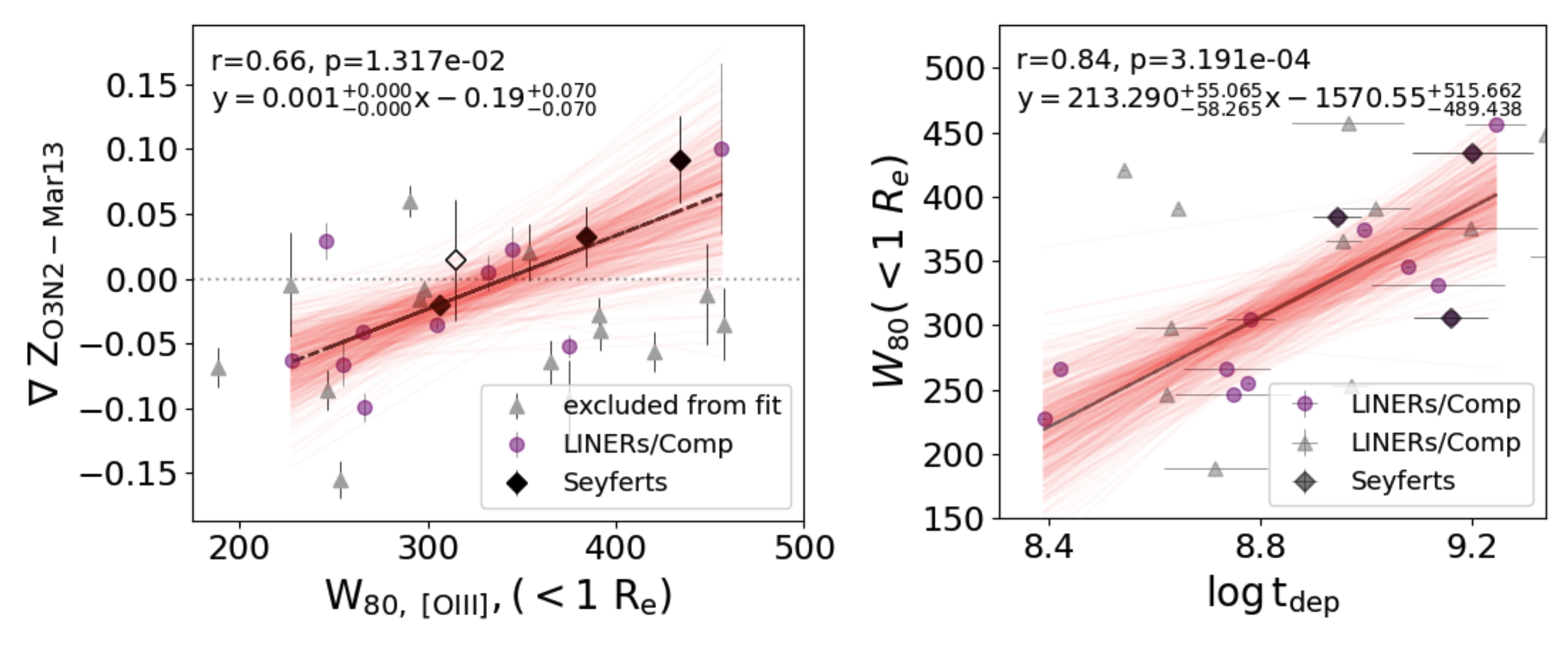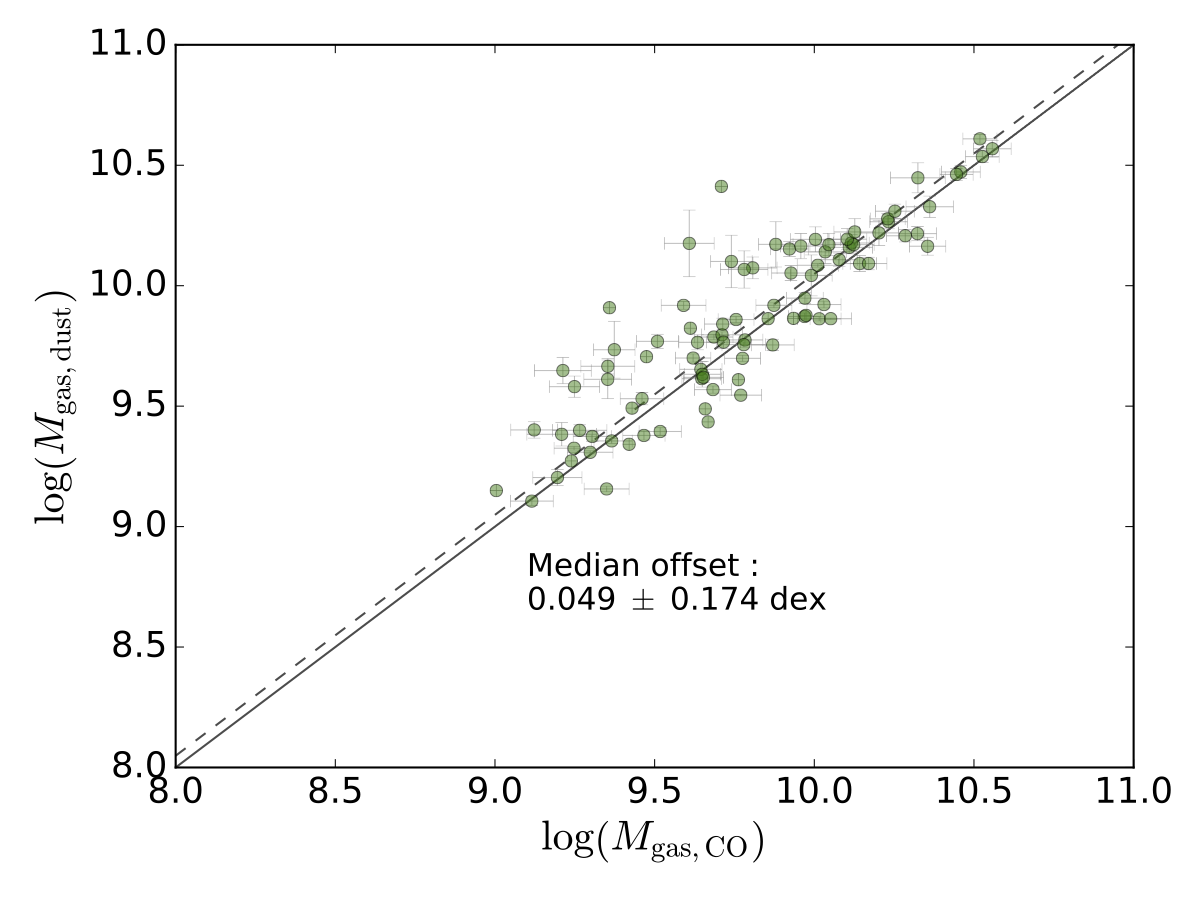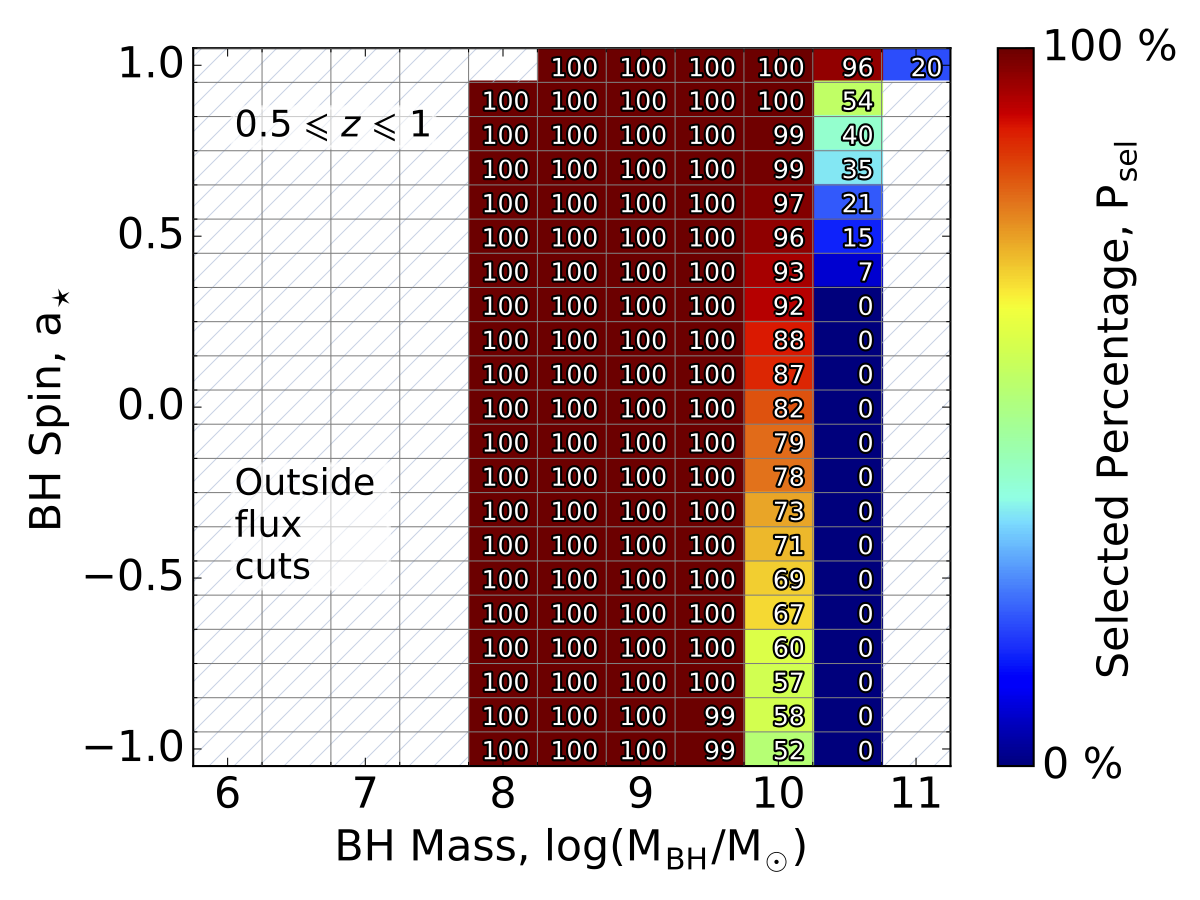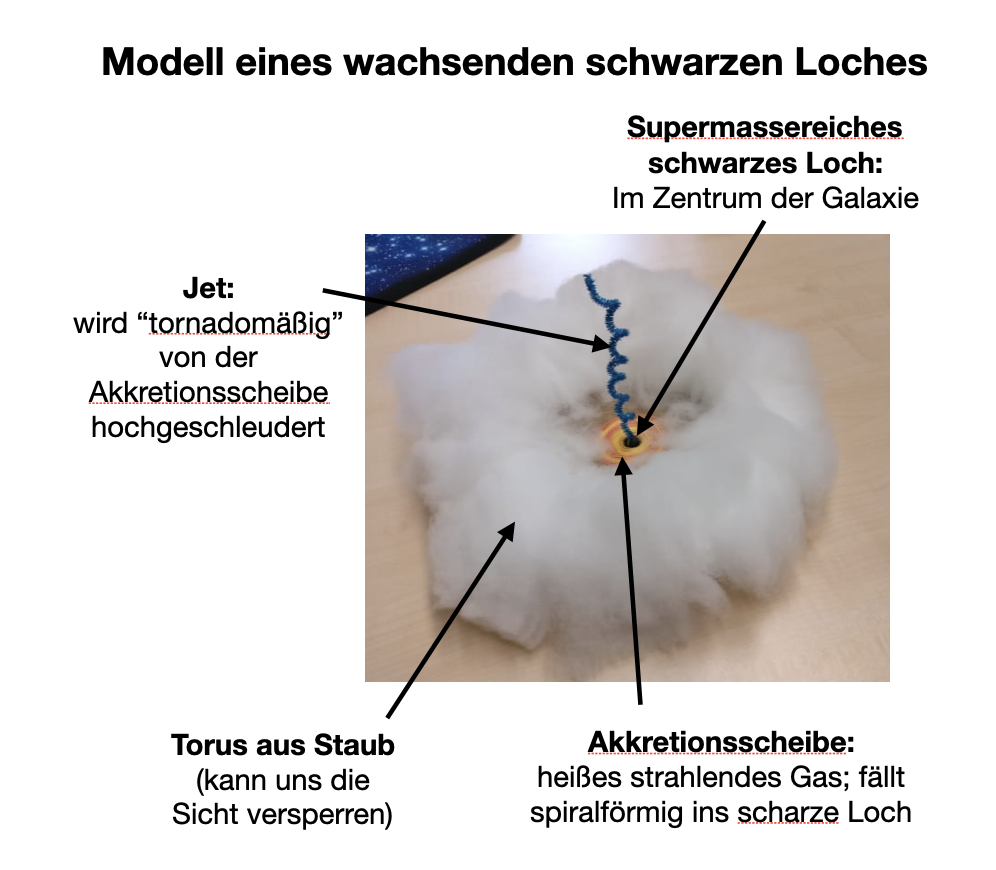Research
MASCOT: Molecular gas depletion times and metallicity gradients -- evidence for feedback in quenching active galaxies
Bertemes et al. (2023), MNRAS, 518, 5500

Left panel: Gas-phase metallicity gradients $\nabla Z$ plotted against the mean [O III] $W_{80} (< R_e)$ parameter (averaged over all spaxels out to $1 \ R_e$). We find a strong correlation between $\nabla Z$ and average [O iii] $W_{80}$ in Seyfert AGN (black datapoints) and LINERs/Composites (purple dots). We suggest that this relation emerges via weak chemically-enriched outflows. The targets plotted in grey are excluded from the fit due to exhibiting too many spaxels in which we deem the recovered $W_{80}$ values to be unreliable ($S/N < 10$, ‘DONOTUSE’ flag, or negative flux). Only targets with $>10$ % of reliable spaxels are included in the fit. The best linear fit is shown as a black solid line, while the red lines show fits recovered when perturbing the datapoints within their uncertainties. The r-value, p-value and coefficients of the best fit are further annotated in the top of the panel. Right panel: There is also a strong correlation between [O iii] $W_{80} (< R_e)$ and depletion times $t_\mathrm{dep}$, such that the AGN-like galaxies with the strongest [O iii] line broadening are the least efficient at forming stars out of the available molecular gas.
Cross-calibration of CO- versus dust-based gas masses and assessment of the dynamical mass budget in Herschel-SDSS Stripe82 galaxies
Bertemes et al. (2018), MNRAS, 478, 1442
We present a cross-calibration of CO- and dust-based molecular gas masses at $z \leqslant 0.2$. Our results are based on an IRAM survey collecting CO(1-0) measurements of 78 massive ($\log M_{*} > 10$) galaxies with known gas-phase metallicities, and with IR photometric coverage from WISE (22 $\mu{\rm m}$ ) and Herschel SPIRE ($250$, $350$, $500$ $\mu{\rm m}$). We find a tight relation ($\sim 0.17$ dex scatter) between the gas masses inferred from CO and dust continuum emission, with a minor systematic offset of $0.05$ dex. The two methods can be brought into agreement by applying a metallicity-dependent adjustment factor ($\sim 0.13$ dex scatter). We illustrate that the observed offset is consistent with a scenario in which dust traces not only molecular gas, but also part of the ${\rm H}\,{\rm \small I}$ reservoir, residing in the ${\rm H_2}$-dominated region of the galaxy. Observations of the CO(2-1) to CO(1-0) line ratio for two thirds of the sample indicate a narrow range in excitation properties, with a median ratio of luminosities $ \left\langle R_{21} \right\rangle \sim 0.64 $. Finally, we find dynamical mass constraints from spectral line profile fitting to agree well with the anticipated mass budget enclosed within an effective radius, once all mass components (stars, gas and dark matter) are accounted for.

Comparison between dust-based gas masses and CO-based gas masses. Cold gas masses from the two methods correlate strongly, albeit with a modest offset towards higher values for the dust-based inference. The 1-to-1 line (black solid) and the median offset (black dashed) are shown for reference.
Testing the Completeness of the SDSS Colour Selection for Ultramassive, Slowly Spinning Black Holes
Bertemes et al. (2016), MNRAS, 463, 4041

Percentage of observable sources (i.e., within the flux limits) that are selected as possible quasar candidates in each bin of $\left(M_{BH},a_{\star}\right)$. Hatched bins indicate that all of the objects lie outside SDSS's flux limits. We stress that the number of observable objects varies between adjacent bins, even if they result in identical percentages of colour-selected objects.
We investigate the sensitivity of the colour-based quasar selection algorithm of the Sloan Digital Sky Survey to several key physical parameters of supermassive black holes (SMBHs), focusing on BH spin ($a_{\star}$) at the high BH-mass regime $M_{BH} \geq 10^{9} M_{\odot}$). We use a large grid of model spectral energy distributions, assuming geometrically-thin, optically-thick accretion discs, and spanning a wide range of five physical parameters: BH mass $M_{BH}$, BH spin $a_{\star}$, Eddington ratio $ L/L_{Edd}$, redshift $z$, and inclination angle $inc$.
Based on the expected fluxes in the SDSS imaging ugriz bands, we find that $\sim 99.8$ % of our models with $M_{BH} \leq 10^{9.5} M_{\odot}$ are selected as quasar candidates and thus would have been targeted for spectroscopic follow-up. However, in the extremely high-mass regime, $\geq 10^{10} M_{\odot}$, we identify a bias against slowly/retrograde spinning SMBHs. The fraction of SEDs that would have been selected as quasar candidates drops below $\sim 50$ % for $a_{\star} < 0$ across $0.5 < z < 2$. For particularly massive BHs, with $M_{BH} \sim 3 \cdot 10^{10} M_{\odot}$, this rate drops below $\sim 20$ %, and can be yet lower for specific redshifts. We further find that the chances of identifying any hypothetical sources with $M_{BH} = 10^{11} M_{\odot}$ by colour selection would be extremely low at the level of $\sim 3$ \%.
Our findings, along with several recent theoretical arguments and empirical findings, demonstrate that the current understanding of the SMBH population at the high-MBH, and particularly the low- or retrograde-spinning regime, is highly incomplete.
Talks & workshops (Selection)
- ◦ Zooming in on luminous quasars with JWST: Early Science Highlights and Data Analysis Tools from the Q3D program ◦ Q3D: A JWST view of the impact of 3 powerful quasars on their hosts ◦ The star formation histories of MaNGA galaxies scattered around the Main Sequence - according to distinct fitting philosophies EAS, Krakow, July 2023
- The decline of star formation: Exploring molecular gas, outflows and the early history of star formationIPARCOS seminar (Universidad Complutense de Madrid) - February 2023 → Video link
- A hands-on session with q3dfit, a powerful new PSF deconvolution and spectral analysis packageRingberg, Germany, October 2022
- The decline of star formation in AGN-like galaxies: Linking molecular gas, outflows & metallicity gradientsReykjavik, Iceland, September 2022
- The decline of star formation in AGN-like galaxies: Linking molecular gas, outflows & metallicity gradientsEAS, Valencia, June 2022
- The decline of star formation: Exploring molecular gas, outflows and the early history of star formationUK talk tour - ICG Portsmouth, University of Bath, Cardiff University, University of Southampton, University College London, KICC Cambridge - June 2022
- The MIR fitting capabilities of q3dfit, a PSF deconvolution and spectral analysis tool in the wake of JWSTonline (STScI, US), March 2022
- MASCOT: The link between molecular gas and radially resolved galaxy properties in SDSS-IV MaNGAonline (Copenhagen, Denmark), September 2021
- MASCOT: The link between molecular gas and radially resolved galaxy properties in SDSS-IV MaNGA AGNonline NAM (Bath, UK), July 2021
- Scatter in the star-forming main sequence: A remnant of long-term variations in stellar mass growth?Extragalactic Spectroscopic Surveys: Past, Present and Future of Galaxy Evolution, Santiago, Chile, November 2019 **CANCELLED DUE TO COVID-19
- CO- vs dust-based gas masses and assessment of the dynamical mass budget in Stripe82 Birth, life and fate of massive galaxies and their central beating heart, Favignana Island (IT), Sept 2018
- CO- vs dust-based gas masses and assessment of the dynamical mass budget in Stripe82 Synergy between low and high redshift galaxy evolution studies in the era of JWST and EUCLID, Noordwijk (NL), July 2018
- Cross-calibrating CO- and dust-based gas masses and their dependence on environment Galaxy Evolution across time, Paris (FR), 12-16th June 2017
- Are we missing ultramassive, slowly spinning Black Holes in the SDSS colour selection? High Energy Astrophysics Seminar, Harvard-Smithsonian Center for Astrophysics, Cambridge (US), 7th Sept 2016 → Video link
I’m always happy to travel around and talk more! If you’re interested in what I’m doing, please feel free to message me. For a more complete list of talks, please see my CV below.
Outreach (Selection)
Aside from doing research, I enjoy engaging in outreach. Please find a selection of outreach activities here - for a more complete summary, please refer to my CV.
Current Outreach
At Heidelberg University, I am participating in the annual Girls' Day, where I co-organise the online workshop "Schwarze Löcher im Universum" open to 5th & 6th grade girls in Germany. Together with Dr Dominika Wylezalek, we craft a model of an actively accreting supermassive black hole while learning more about these fascinating objects in our Universe.
Past Outreach
During my time in Bath (2016-2019 roughly), I have been part of one of the University of Bath's outreach teams, led by Dr Ventsislav Valev. The main focus lies on organising science workshops for primary school children on light to help to inspire the next generation of scientists! The team gratefully acknowledges funding from the Royal Society and the STFC, as well as support on equipment by Thorlabs and Zeiss.
CV
For an up-to-date CV, please feel free to contact me.
I will also periodically upload updated versions here: View/download CV
